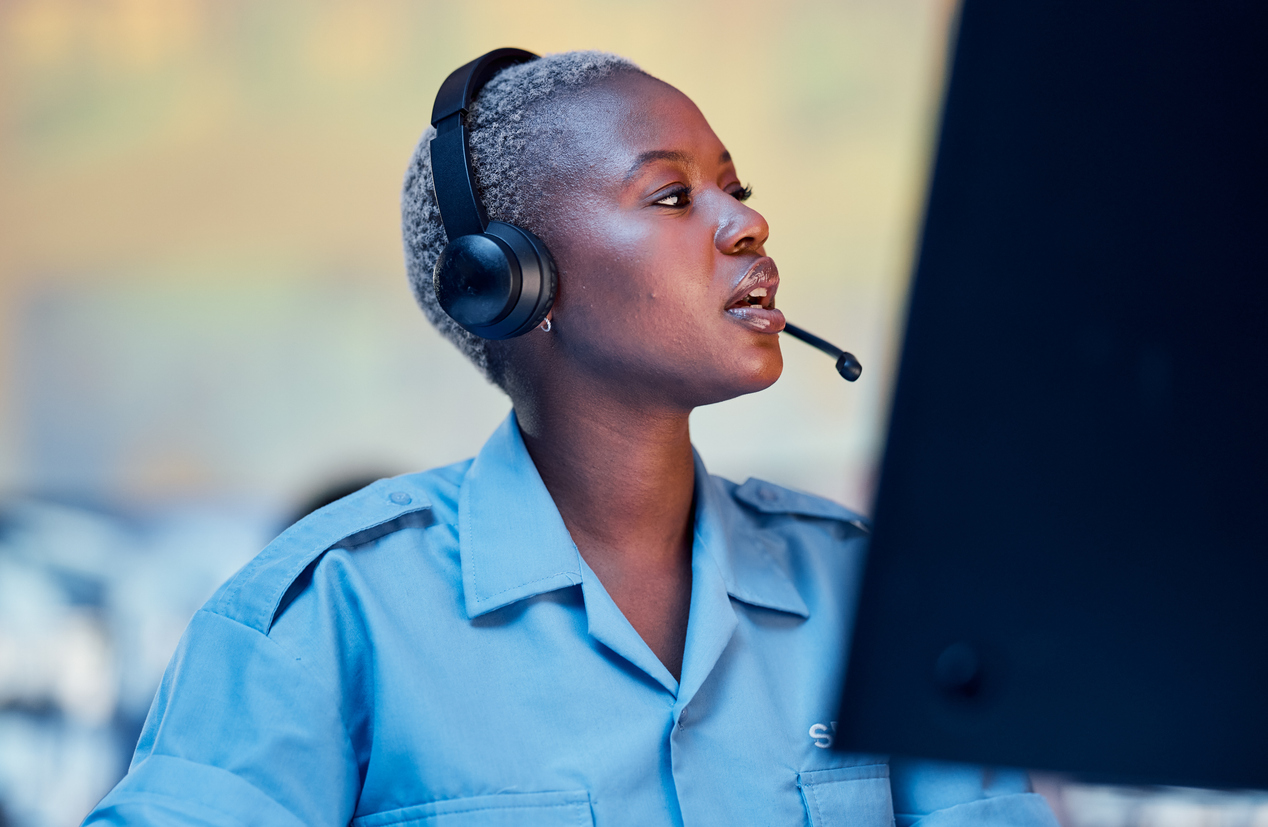Your Guide to Understanding Criminal Procedure
Written by:
East Carolina University®
• Oct 21, 2025

Your Guide to Understanding Criminal Procedure
Criminal procedure is the system of rules and processes that govern the progression of criminal cases through the justice system. This guide outlines the stages of criminal procedure, what happens at each step, why the process is important, and where to find reliable resources and statistics.
Whether you are a student, an interested citizen, or someone currently navigating the justice system, this overview defines key terms; explains the roles of police, prosecutors, defense attorneys, and judges; and explains why a fair, transparent criminal procedure matters to both individual liberty and public safety.
What Is Criminal Procedure?
Criminal procedure refers to the legal rules and practices that guide law enforcement, prosecutors, defense counsel, and courts in handling allegations of criminal conduct. It defines how investigations are conducted, how arrests are made, how charges are filed, and how trials and appeals are carried out.
Criminal procedure exists to balance two core interests: protecting society by enforcing criminal laws and safeguarding individual rights guaranteed by the Constitution of the United States. These individual rights, including the Fourth Amendment’s limits on searches and arrests, the Fifth Amendment’s privilege against self-incrimination, and the Sixth Amendment’s right to counsel, are examples of constitutional protections that shape criminal procedure.
Steps in the Criminal Procedure Process
The criminal procedure process follows a series of defined steps that structure how cases are handled, protect individual rights, and ensure legal accountability.
Investigation
The investigation phase is where law enforcement collects facts, locates evidence, and interviews witnesses to determine whether a crime likely occurred and who might be responsible. Investigative work can involve multiple agencies, including local police, state investigators, and federal agencies such as the Federal Bureau of Investigation (FBI) or Drug Enforcement Administration (DEA).
Law enforcement and other investigative agencies collaborate to gather information and build a case. Investigators may obtain search warrants when required by the Fourth Amendment; warrants are issued by neutral judges based on probable cause. Evidence collected during the investigation phase informs whether prosecutors move forward with formal charges.
Arrest
An arrest occurs when an officer takes an individual into custody. Arrests require probable cause—facts or circumstances that would lead a reasonable officer to believe a person has committed a crime. For example, an officer witnessing a suspect selling or in possession of illegal narcotics would constitute probable cause.
Arrest warrants are obtained by submitting sworn affidavits that lay out the basis for probable cause; however, in many emergencies, officers may make warrantless arrests when immediate action is needed. How and when an arrest is made can affect later criminal procedure issues, including challenges to evidence obtained during or after the arrest.
Charging
After investigation and arrest, prosecutors decide whether to file charges. Charging can take different forms. For example, in federal felony matters, prosecutors usually present evidence to a grand jury that decides whether to return an indictment —a formal statement of charges. In other cases, prosecutors file an information or criminal complaint to initiate charges.
Charging requires prosecutors to weigh the evidence and the likelihood of proving guilt beyond a reasonable doubt at trial. A charging decision marks the transition from investigation to the court proceedings stages of the criminal procedure process, where the accused becomes a defendant.
Arraignment
The arraignment, or initial hearing, is the defendant’s first court appearance after formal charges have been filed. At arraignment, the court informs the defendant of the charges against them and their constitutional rights, advises about counsel, and typically addresses pretrial release or bail.
Judges consider factors such as ties to the community, criminal history, and public safety when deciding whether to release a defendant or order detention pending trial. The defendant also enters an initial plea that sets the course for the next stages of criminal procedure.
Defendants usually enter a plea of guilty, not guilty, or nolo contendere (no contest), which is a formal acceptance of conviction and sentencing without admitting guilt. Nolo contendere is treated like a guilty plea for criminal purposes, but is generally not usable as an admission of liability in related civil suits.
Discovery
Discovery is the process by which the prosecution and defense exchange information and evidence relevant to the case. Prosecutors prepare by interviewing witnesses, reviewing reports, and determining which evidence they will present at trial. They also have a continuing duty to provide the defense with material that could affect guilt or punishment, including exculpatory evidence.
Defense counsel investigates independently, seeking records, witness statements, and scientific data that might challenge or disprove the prosecution’s case. Discovery promotes transparency and prevents unfair surprises at trial. Failures in discovery can lead to sanctions or a new trial if critical information is withheld.
Plea Bargaining
Plea bargaining allows the defense and prosecution to negotiate a resolution without a full trial. Most criminal cases are resolved through plea agreements in which the defendant agrees to plead guilty in exchange for concessions from the prosecution, often a lesser charge or an agreed-upon sentence recommendation.
Plea bargaining conserves court resources and provides certainty for both sides, but it also raises concerns about voluntariness and fairness. Defendants must enter pleas knowingly and voluntarily, and defense counsel must carefully evaluate whether a plea is in the client’s best interest.
Preliminary Hearing
A preliminary hearing gives a judge the chance to determine whether probable cause exists to hold the defendant for trial on felony charges. During this hearing, the prosecution presents evidence and witnesses; the defense can cross-examine but usually cannot call its own witnesses at this stage.
If the judge finds probable cause, the case proceeds toward trial. If not, the charges may be dismissed, though prosecutors sometimes refile. The preliminary hearing serves as an early check on prosecutorial charging decisions.
Pre-Trial Motions
Pre-trial motions are legal requests asking the court to rule on issues before trial. Common pre-trial motions include motions to suppress evidence (e.g., evidence seized in an allegedly illegal search), motions to dismiss charges, and motions to change venue.
These motions shape what evidence will be admissible, what legal theories will proceed to trial, and how the case will be framed for jurors. Successful pre-trial motions can significantly narrow or even end a prosecution, making this stage crucial in criminal procedure.
Trial
At trial, the prosecution must prove the defendant’s guilt beyond a reasonable doubt. Trials may be held before a judge or a jury. The typical trial follows a structured sequence: jury selection, opening statements, presentation of evidence and witness testimony with cross-examination, closing arguments, jury instructions, deliberation, and verdict.
The trial is the central adjudicative component of criminal procedure, designed to adjudicate guilt or innocence using rules of evidence and procedural safeguards that protect fairness and the defendant’s rights.
Post-Trial Motions
If a defendant is convicted, post-trial motions allow the defense to ask the court to overturn the verdict or order a new trial based on errors that occurred during trial, newly discovered evidence, or insufficiency of the evidence.
The prosecution may also file motions challenging aspects of the verdict or sentence. Courts review the post-trial motions to determine whether legal mistakes affected the outcome and whether relief is warranted under the standards of criminal procedure.
Sentencing
Sentencing determines the punishment imposed after a conviction. Sentencing rules vary by jurisdiction but generally allow the judge to consider statutory guidelines, presentence reports, victim impact statements, and aggravating or mitigating factors.
Some systems use mandatory minimums or sentencing ranges set by established guidelines, while others give judges broader discretion. Sentences can include incarceration, fines, probation, community service, or restorative measures. The sentencing phase is a critical moment in criminal procedure where the court balances retribution, deterrence, rehabilitation, and public safety.
Appeal
An appeal challenges a conviction or sentence to a higher court on legal grounds, such as errors in applying the law, improper admission of evidence, or constitutional violations during the criminal procedure.
Appeals focus on whether legal mistakes affected a trial’s fairness or outcome. Appellate courts review records and legal arguments and may affirm, reverse, or remand the case for further proceedings. Appeals provide a mechanism for legal review that can correct errors and reinforce consistent application of criminal procedure across cases.
Why Criminal Procedure Matters
Criminal procedure is critical to justice and fairness because it sets the rules that protect both community safety and individual liberty. Consistent and reliable criminal procedure ensures that investigations proceed lawfully, arrests are made with probable cause, trials adhere to rules of evidence, and convictions rest on proof beyond a reasonable doubt. These safeguards prevent arbitrary power and wrongful convictions while providing a transparent path for resolving disputes.
Fair criminal procedure upholds public confidence in the justice system. When procedures are perceived as biased or irregular, trust erodes and the system’s legitimacy suffers. On the other hand, consistent criminal procedure supports accountability for wrongdoing by defining how evidence is gathered, tested, and weighed in open court.
Criminal Procedure Resources and Statistics
Use these resources to learn more about criminal procedure and to locate statistics that illuminate trends in criminal justice.
-
Bureau of Justice Statistics (BJS): This federal agency oversees crime data, including the identities of people convicted of crimes and victims of crime. The BJS also collects and publishes data detailing justice system operations such as arrests, prosecutions, and sentencing. Users can find national and state-level statistics on arrests, prosecutions, court outcomes, sentencing, incarceration, and probation populations, victimization surveys, and recidivism studies, along with reports, interactive data tools, and trend analyses that help researchers, policymakers, and the public understand how the justice system performs over time.
-
U.S. Department of Justice (DOJ): This agency enforces federal laws, represents the United States in legal matters, and oversees federal law enforcement agencies to protect public safety and uphold the rule of law. The DOJ prosecutes federal crimes, investigates civil rights violations, coordinates with state and local partners on major investigations, provides legal advice to executive agencies, and manages correctional and detention policies through elements like the FBI, U.S. Attorneys’ Offices, and the Office of Justice Programs.
-
Justia, “Criminal Procedure Law”: This resource explains how the U.S. criminal justice system operates as an adversarial process governed by laws and constitutional safeguards. It summarizes key protections under the Bill of Rights, including limits on searches and seizures, the right to remain silent and counsel, the right to speedy trials and confrontation of witnesses, and prohibitions on excessive bail and cruel punishment. The resource also outlines the typical stages of a criminal case.
-
National Center for State Courts (NCSC): The NCSC site offers practical resources and research to support court systems and justice professionals, including policy reports, best‑practice guides, toolkits, and data on topics such as case management, access to justice, court technology, and court performance.
-
Innocence Project: The Innocence Project’s mission is to free wrongly convicted people and reform the criminal justice system. Its website features profiles of exonerated individuals, explains how DNA testing and other forensic reviews can prove innocence, and describes the legal services the organization provides, including how to request representation. The site also offers research and reports on causes of wrongful convictions, policy recommendations for preventing future errors, news about litigation and legislative campaigns, and ways for the public to get involved.
-
National Association of Criminal Defense Lawyers (NACDL): The NACDL site provides numerous resources for defense lawyers and anyone interested in protecting constitutional rights, including practice tools, continuing legal education programs, policy reports, amicus briefs, and expert directories. The site also offers membership information, training events, publications for trial skills, and links to the NACDL Foundation’s research and reform initiatives.
-
American Bar Association (ABA), Criminal Justice Section: This site provides practice-focused resources for prosecutors, defense attorneys, judges, law professors, and students, including peer-reviewed publications, model standards, continuing legal education programs, committee activities, policy reports, podcasts, and events that address current criminal law issues and recommend reforms.
Formal Education Fosters a Deeper Understanding of Criminal Procedure
Criminal procedure is an important framework that defines how justice is pursued and how rights are protected. Each step plays a role in ensuring fair and impartial outcomes while enabling legal enforcement of criminal laws.
Understanding criminal procedure equips citizens, students, and practitioners to knowledgeably engage in criminal justice debates and to advocate for systems that are both effective and just.


